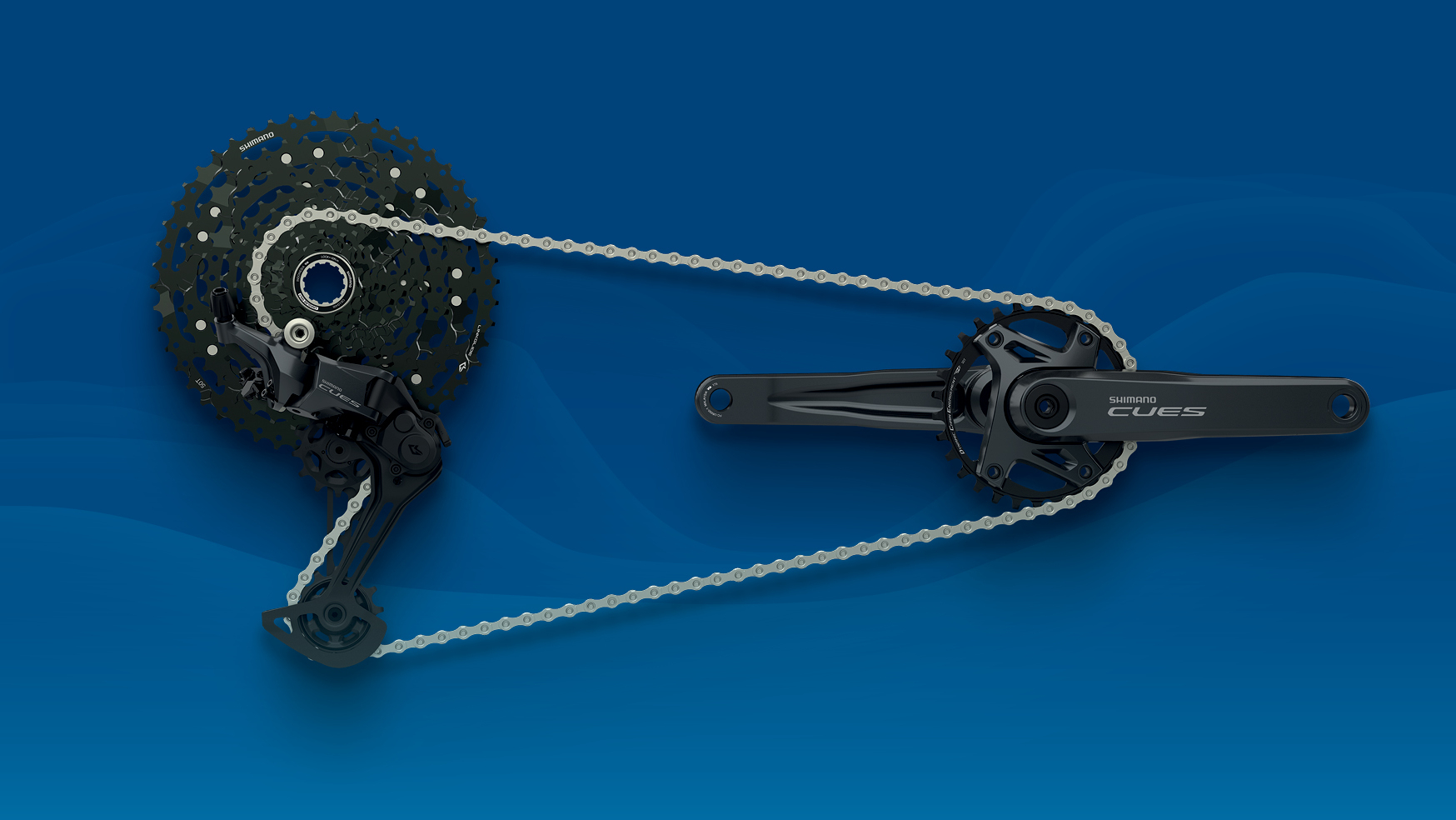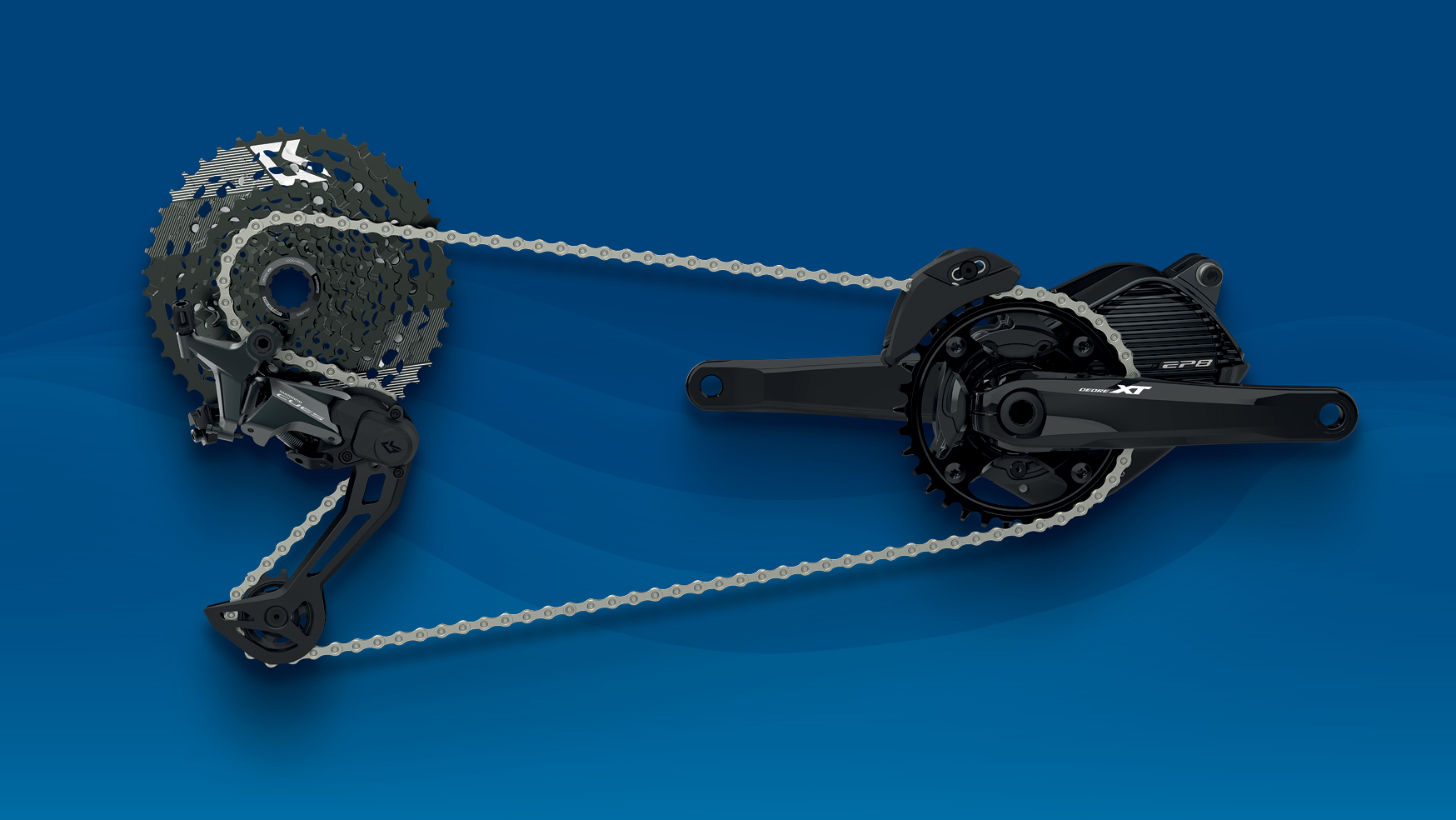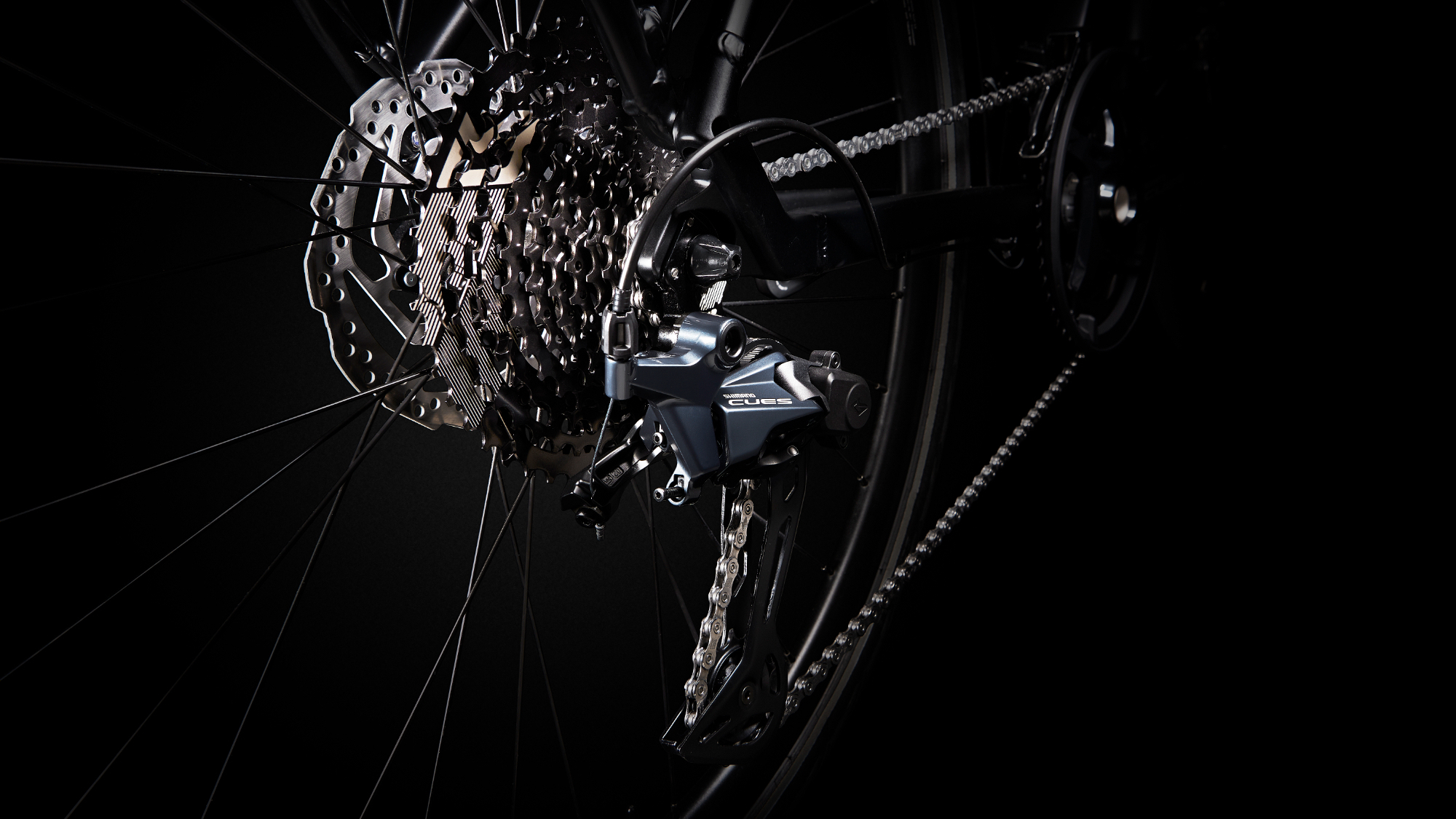Goodbye Altus, Acera, Alvio, 10 and 11-speed Deore drivetrains. Hello Shimano Cues
Shimano announces big changes to its middle tier MTB, gravel and road drivetrain components and makes 1x available for entry level mountain bikes

Shimano has just announced a major shift in its approach to drivetrains with a new range dubbed Cues. Rather than targeting the best MTB groupsets, this new raft of pedaling components will cover the mid tiers of Shimano's existing ranges, so for MTB that means that Altus, Acera, Alvio, 10- and 11-speed Deore will replaced by Cues. Similarly on the gravel/road side, Claris, Sora and Tiagra will also be assimilated into the new system. Existing owners of the above systems need not worry yet though, as Shimano will still continue to make replacement parts – for the time being at least.
Historically at Shimano and many other brands, lower and mid range consumer components have used trickle down technology from race spec versions. However, in the case of Cues, the Japanese manufacturer has designed its new range of drivetrains specifically with the riders and the level of riding the components will be used for in mind.
Built around existing Linkglide 11-speed technology, which Shimano say is smoothest shifting it can make, Cues drivetrains will have thicker, taller cogs which should minimize dropped chains and premature wear, robust shift ramps that can handle abuse, and a triple durability cassette. This should add up to a system that's ideal for new riders and e-bike use/abuse alike.
Another positive for mountain bikers is that all of Cues' MTB orientated components will run a single chainring (1x). This means that novice riders (who typically buy bikes with mid-tier drivetrains) will no longer have the extra complication and hassle of managing and maintaining front and rear derailleurs.

Cues will come in three speed options – 9-speed with an 11 – 46 chainring, 10-speed with 11 – 48, and 11-speed with the widest gear range of all 11 –50. There are also crank options for square taper and Hollowtech II type, and clutch mech equipped derailleurs.
Cues uses as many common components as possible across the range, so riders and manufacturers will have menu of drivetrain components to choose from and choice won't be dictated by chain speed. Cues is also compatible with other manufacturer's drivetrain cranks, chains, etc – Shimano say that any existing 11-speed crank is Cues compatible.
As it's replacing a vast array of existing drivetrain options and systems, Cues will have three main internal component levels to help make purchasing less confusing. U8000 is the top tier, followed by U6000 and U4000. There's also U3000, but so far, the only component announced at this lowest tier is a RD-U3020 rear mech designed for use with a front derailleur.

Shimano Cues U8000, U6000 and U4000
At the time of writing, we've not had a massive amount of detail on Cues U8000, U6000 and U4000, but this is what we know so far.
Comparable with Shimano's XT trekking groupset, 11-speed Cues U8000 will have the best finishing in the new range. As well as drivetrain components, U8000 also includes a brake option, and as it's been designed with trekking, touring and commuting in mind, U8000 comes with options for a front derailleur too.
The U6000 series is aimed at MTB and e-MTB with 10- and 11-speed options. Both drivetrain setups share the same rear RD-U6000 MTB derailleur which has a traditional Shimano clutch mechanism to maintain chain tension. The U6000 cranks have solid arms, outboard bearings and replaceable chainrings, while the shifters will be available with and without an optical gear display. There also are options for a front derailleur in U6000, but they're not designed for MTB use.
U4000 will be appearing on 9-speed mountain bikes, though the derailleur has a newly designed spring clutch instead of the one-way friction clutch found on the U6000 and existing Shimano clutch mechs. Shimano say the chain retention exceeds the levels found on existing 11-speed XTR, XT and SLX drivetrains, though without a clutch, the chain will be much noisier over rough, rattly sections. U4000 cranks are square-taper with riveted on, non-replaceable chainrings to keep the cost down. Like U6000, there are options for a front derailleur at the U4000 level, but they're not compatible with the MTB range.
While the vast majority of the Cues system is brand new, Shimano did launch auto-shifting Cues versions of its electronic Di2 drivetrains last year.
We've had no word on availability or pricing for Cues as yet, but we'll report on that as soon as we know. For more info and images, head to bike.shimano.com

Rich Owen joined the BikePerfect team as editor in 2021. He's worked as a journalist and editor for over 24 years, with 12 years specializing in cycling media. Rich bought his first mountain bike (a rigid Scott Tampico) in 1995 and has been riding MTB for almost 30 years.
Current rides: Merida One-Forty 6000, Banshee Paradox, YT Jeffsy Core 3, Saracen Ariel 30 Pro
Height: 175cm
Weight: 69kg
